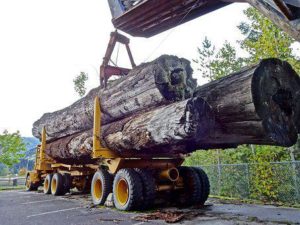The harvesting of wood is an important aspect of forestry, supplying the timber used in the construction and furniture-making industries, among others. Trees are harvested for various reasons: To clear land for building, thin an overcrowded forest, provide lumber or pulpwood for the manufacture of forest products, or to remove a hazardous tree. In recent years there has been a growing concern about the sustainability of this process, with accusations that too much damage is being done to the environment. So, companies came up with the approach of sustainable forestry.
If you’re looking for expert logging services, get in touch with William A. Day Jr. & Sons.
Over the years, wood harvesting has received a lot of negative press. However, done responsibly, wood harvesting can be a boon to ecosystems, providing important ecological services. This blog post discusses the effects of wood harvesting on the environment and offers some tips for sustainable harvesting practices.
Forest Ecosystems Provide a Wide Variety of Important Services
One of the main reasons forest ecosystems are so important is that they provide many important services. For example, forests play a critical role in regulating the climate. They also help to protect water resources and soil quality. Forests are also home to an incredible diversity of plants and animals, some of which are endemic to these ecosystems.
Sustainable Forestry is a Way to Harvest Trees Responsibly
The goal of sustainable forestry is to harvest trees to maintain the health and productivity of the forest over time. This means taking into account factors like the age and density of the trees being harvested and the condition of the forest floor.
It Can Promote Biodiversity
Sustainable forestry practices can promote biodiversity by conserving the various ecosystems in forests. For example, sustainable forestry can help protect wildlife habitats and prevent biodiversity loss due to deforestation.
It Can Help Mitigate Climate Change
Sustainable forestry can help mitigate climate change by reducing the amount of carbon dioxide (CO2) released into the atmosphere. Forests act as a carbon sink, meaning they absorb CO2 from the atmosphere. When trees are harvested, this CO2 is released back into the atmosphere, contributing to climate change. Sustainable forestry practices minimize these emissions by ensuring that trees are harvested responsibly.
It Allows the Rotation of Trees
One of the benefits of sustainable forestry is that it allows for the rotation of trees. This means that trees are not continuously harvested but are allowed to grow back so that they can continue to absorb CO2 from the atmosphere.
Wood Harvesting Can Cause Floods
While sustainable forestry can help mitigate climate change, it is important to note that irresponsible forestry practices can also have negative consequences. One such consequence is the increased risk of floods. When forests are cleared, the trees and vegetation that hold the soil in place are gone. This can lead to soil erosion, which can lead to flooding. Floods can also damage homes and infrastructure and can cause loss of life.
It Can Lead to Fires
Another potential consequence of deforestation is the increased risk of fires. When trees are cleared, the ground is exposed to the sun and wind. This can create conditions that are ripe for fires to start and spread. Some examples of such incidents are the fires that swept across California in 2018, the Amazon rainforest fire in 2019, and the Australian bushfire in 2020. In each of these cases, massive forest areas were destroyed, and the fires caused significant damage to property and loss of human life.
Wood Harvesting Can Result in Expansion of Deserts
When forests are cleared, the land that is left behind can quickly become dry and covered in sand. This can create deserts, as we have seen in many parts of the world, including Africa, the Middle East, and Australia. The increased spread of deserts poses a serious threat to human populations. It can lead to a decline in food production, an increase in sandstorms and dust storms, and a decrease in freshwater availability.
Tips for Sustainable Harvesting Practices
Following are some tips for sustainable forestry to protect the ecology of the planet:
- Always use a sharp blade to reduce the amount of friction and heat generated during the cutting process, which can cause damage to the wood and lead to a decrease in its longevity.
- When possible, use a saw instead of an ax to prevent splitting the wood and make it easier to join together later.
- Always cut towards the base of the tree, not the top, to ensure that the tree will be able to continue growing.
- Leave some trees standing around the edges of the cleared area to provide shade and shelter for other plants and animals.
- If possible, use a wood chipper to break down logs into smaller pieces that can be used for mulch or firewood, rather than just leaving them to rot.
Wood harvesting can have a major impact on the environment, depending on how it is done. This article looked at the different ways wood harvesting can affect the environment and the measures that can be taken to mitigate the impact. If you are interested in learning more about this topic, please contact our land management experts. All our services, including trucking services, logging and land management services, and wood harvesting in Maine and New Hampshire, are carried out sustainably.

